Best Practices Articles

Unified PartnerOps for Manufacturers: A Strategic Imperative for the Digital Age
Unified PartnerOps for Manufacturer is essential for channel-first manufacturers to overcome fragmented operations that cause black-box pipeline visibility, brand inconsistency, slow partner onboarding, and complex incentive management. Adopting a unified PartnerOps for Manufacturer platform provides a single source of truth, automates key processes, and creates a predictable, data-driven revenue engine in the age of Industry 4.0.
Key Takeaways
- Unified PartnerOps for Manufacturer ensures clear pipeline visibility.
- The framework centralizes brand control and marketing assets.
- It automates partner onboarding and training for faster revenue.
- It provides transparent, ROI-driven management of channel incentives.
The global manufacturing world is undergoing a profound revolution. This shift, often referred to as Manufacturing 4.0, is driven by new digital technologies, intelligent automation, and advanced data analytics. It's transforming the factory floor into an interconnected, highly efficient, and intelligent ecosystem. Robots, IoT sensors, and AI-powered predictive maintenance are now the new standard for competitive excellence. Yet, for a vast number of these innovative companies, a critical part of their business remains stuck in the past: their channel partner network.
While production lines have completed a full digital transformation, the complex network of distributors, dealers, VARs, and system integrators that bring these advanced products to market often operates on a foundation of disconnected spreadsheets, disparate portals, and manual email chains. This operational disconnect creates a wide gap between a manufacturer's internal efficiency and its external go-to-market effectiveness. The result is friction, wasted resources, eroded profit margins, and a significant drag on potential growth.
The real solution to bridging this gap isn't just another temporary fix or point solution. It requires a fundamental strategic shift: adopting a unified PartnerOps framework for manufacturers. This integrated approach treats the partner ecosystem with the same rigor, data-centricity, and process automation as found in modern factories. This article will explore the critical challenges that arise from disjointed channel operations. It will also illuminate how a unified PartnerOps platform is the essential engine for driving visibility, efficiency, and predictable revenue growth in the modern manufacturing era. The strategic importance of adopting PartnerOps for Manufacturer cannot be overstated.
The Hidden Costs of Disconnected Partner Systems
On the surface, managing a channel with a collection of familiar tools seems manageable. Using a portal for asset downloads, a spreadsheet for tracking Market Development Funds (MDF), and email for lead distribution may appear to be sufficient. However, this fragmented approach creates significant hidden costs that quietly undermine the entire channel strategy. Every disconnected system becomes a data silo. This prevents a holistic view of the business and makes informed decision-making nearly impossible.
This lack of integration directly impacts core revenue operations. Without a unified view of the partner pipeline, revenue forecasting becomes a high-stakes game of guesswork. Sales cycles are extended as leads fall through the cracks between manual handoffs. Opportunities are missed because there is no visibility into which partners need support on which deals. The administrative burden on channel account managers skyrockets. They spend their days chasing partners for updates instead of strategically enabling their success.
Furthermore, this patchwork of systems runs counter to the broader enterprise goal of infrastructure consolidation. CIOs and IT leaders are actively working to reduce complexity, enhance security, and lower the total cost of ownership by moving towards integrated platforms. A fragmented channel ecosystem is a glaring exception to this strategy, creating security vulnerabilities and increasing IT overhead. To truly achieve operational excellence, the principles of modernization and unification must extend beyond the factory walls and into the very core of the go-to-market strategy.
Key Challenges Solved by Unified PartnerOps for Manufacturer
Challenge #1: The Black Box of Partner Performance and Pipeline Visibility
For many Channel Chiefs and VPs of Sales in manufacturing, the partner pipeline is a frustrating black box. They know activity is happening, but they lack the real-time data and visibility to understand what, where, and with whom. This fundamental lack of insight is one of the most significant barriers to building a predictable and scalable channel.
The problem is running your channel without a clear strategy. This ambiguity leads to a cascade of negative consequences:
- Inaccurate Revenue Forecasting: Without a clear, consolidated view of partner-managed opportunities (including their stage, value, and expected close date), any attempt at forecasting is based on anecdotal evidence and historical guesswork, rather than live data.
- Inefficient Resource Allocation: It’s impossible to know which partners deserve more investment. Top performers may be starved for resources they could use to close even more business. Meanwhile, significant time and money are wasted on underperforming partners who show little potential for growth.
- Missed Coaching Opportunities: Channel managers lack the insight to support partners proactively. They can’t see when a major deal has stalled or when a partner needs help with a competitive challenge, resulting in lost revenue that could have been saved with timely intervention.
- Pervasive Channel Conflict: When lead and deal registration is managed manually or through email, chaos ensues. Multiple partners may unknowingly pursue the same opportunity, leading to frustration, margin erosion, and damaged partner relationships.
The unified solution lies in creating a single source of truth. A core tenet of a successful PartnerOps for Manufacturer strategy is this unified data view. A unified Partner Relationship Management (PRM) platform breaks open the black box, providing a "single pane of glass" view into the entire channel ecosystem. This is achieved through deeply integrated modules designed for end-to-end visibility. Modern solutions solve this by providing a robust Lead Management and Deal Registration system. Every interaction is tracked. The platform offers a shared, real-time view of the entire pipeline across all partners. This data-driven approach transforms channel management from a reactive, relationship-based art into a proactive, performance-based science. This is the power of a modern PartnerOps platform for manufacturers.
Challenge #2: Eroding Brand Equity Through Inconsistent Messaging
A manufacturer's brand is one of its most valuable assets. It is often built over decades and represents quality, reliability, and innovation. In a channel-first model, hundreds or even thousands of independent partner businesses become the face of that brand in local markets. When these partners lack the right tools and content, maintaining brand consistency becomes a monumental challenge.
Without a centralized system for marketing and content, the channel quickly becomes a "Wild West" of branding. Partners, often with limited marketing resources or expertise, are left to their own devices. They might download a logo from a Google search, use outdated product specifications, or create their own messaging that doesn't align with the manufacturer's strategic positioning. This lack of control introduces serious risks that can directly impact the bottom line:
- Brand Dilution: Inconsistent use of logos, colors, and messaging confuses customers and dilutes the brand's market power. A premium, high-tech product can quickly look unprofessional when represented by poorly executed marketing materials.
- Inaccurate Product Information: In complex manufacturing environments, product specifications are critical. When partners use outdated information, it can lead to customer dissatisfaction, incorrect orders, and even potential liability issues.
- Compliance and Legal Risks: Partners may inadvertently make unapproved claims or promises about a product's capabilities, exposing the manufacturer to legal and regulatory risks.
- Wasted Marketing Funds: Market Development Funds are often a significant investment. When partners use these funds to create off-brand, ineffective campaigns, it represents a complete waste of resources with no measurable ROI.
Effective PartnerOps for Manufacturer platforms address this challenge head-on with sophisticated Through-Partner Marketing Automation (TPMA) capabilities. This technology strikes the perfect balance between maintaining central brand control and empowering partners to execute effective marketing in their local territories. The manufacturer’s central marketing team creates a library of professionally designed, brand-compliant marketing assets and campaigns. These assets are housed within the partner portal. Partners can then log in, select a campaign, and with a few clicks, co-brand it before launching it to their local customer base. Manufacturers gain 100% confidence that every marketing dollar spent is supporting a consistent, compliant, and professional brand message. Partners gain access to a wealth of high-quality marketing materials they could never afford to create on their own. This approach is a cornerstone of marketing modernization. This is another key benefit of PartnerOps for Manufacturer.
Challenge #3: Inefficient Partner Lifecycle Management
The journey a partner takes with a manufacturer—from initial recruitment and onboarding to ongoing training and enablement—is a critical determinant of their long-term success and loyalty. A clunky, manual, and inefficient process creates a poor partner experience, resulting in long ramp-up times, low engagement, and high churn rates.
The typical onboarding process at a manufacturer without a unified system is often fraught with friction. It starts with a flurry of emails attaching contracts, program guides, and compliance documents. Training consists of being pointed to a folder of PDFs or recorded webinars. Access to sales and technical content is granted through yet another portal, with a separate login to remember. This creates several problems:
- Slow Time-to-Revenue: The longer it takes to properly onboard, contract with, and train a new partner, the longer it takes for them to generate their first dollar of revenue. This delay directly impacts the manufacturer's growth projections.
- Inconsistent Knowledge: Without a structured training and certification path, partner knowledge across the network becomes highly variable. Some partners may lack the necessary expertise to effectively represent complex products, resulting in suboptimal customer experiences.
- Compliance Gaps: Manually tracking which partners have completed required certifications or compliance training is nearly impossible at scale. This can result in unqualified partners selling or servicing sophisticated equipment.
- High Partner Churn: A frustrating and disorganized onboarding process sends a clear message that the manufacturer does not value their time. This encourages partners to focus their efforts on vendors who are easier to work with.
A unified PartnerOps for Manufacturer platform transforms the entire partner lifecycle into a smooth, automated, and scalable journey. It integrates several key functions into a single, cohesive experience within the partner portal. This includes Partner Onboarding Automation, where the entire process is digitized. Prospective partners apply online and are guided through a step-by-step workflow that provides for digital contract signing and automated access provisioning. An Integrated Learning Management System (LMS) is a game-changer for partner enablement. Manufacturers can create structured learning paths, and the system automatically tracks progress, maintaining a record of all certifications. Centralized Sales Enablement ensures that partners have a single location to find everything they need to sell effectively. By automating and integrating these functions, manufacturers drastically reduce administrative overhead and create an exceptional partner experience.
Challenge #4: The Complexity and Opacity of Channel Incentives
Incentive programs, such as MDF, co-op advertising funds, and sales rebates, are powerful levers for motivating partner behavior and driving sales. However, they are also notoriously complex to manage. For most manufacturers, this process is mired in spreadsheets, making it opaque, inefficient, and nearly impossible to measure the actual return on investment.
Managing global incentive programs on spreadsheets is a recipe for inefficiency and frustration. This manual approach is fraught with problems:
- Lack of Financial Visibility: It is challenging to obtain a clear, real-time view of fund allocation, utilization, and performance. Questions about claimed budget or ROI are almost impossible to answer accurately.
- Slow and Frustrating Processes: For partners, submitting a request for funds or a claim for reimbursement is often a tedious and cumbersome process. The lack of transparency into the approval status leads to frustration and can discourage them from participating.
- High Administrative Overhead: Channel finance and marketing teams spend countless hours manually processing requests, verifying proofs-of-performance, and tracking payments. This low-value work pulls them away from more strategic activities.
- Risk of Errors and Fraud: Manual data entry and tracking in spreadsheets are highly susceptible to human error. Moreover, the lack of rigorous, automated checks creates opportunities for non-compliant or even fraudulent claims to be paid out.
Modern PartnerOps for Manufacturer platforms brings order and intelligence to the chaos of channel incentive management. By integrating incentive management directly into the same system that tracks leads, deals, and marketing activities, manufacturers can finally close the loop and measure true ROI. These platforms provide automated workflows for the entire incentive lifecycle. Partners submit proposals through a standardized form in the portal, which is automatically routed for approval. Once an activity is complete, the partner submits a claim for reimbursement directly through the portal, uploading required documentation as proof of performance. Crucially, the platform can then tie the leads and sales revenue generated from that specific marketing activity back to the initial MDF investment, providing a clear and defensible ROI calculation. This approach transforms incentive programs from a complex cost center into a transparent, data-driven investment vehicle. It aligns with the core principles of revenue operations by directly connecting financial incentives to measurable business outcomes. The effective use of PartnerOps for Manufacturer is a competitive differentiator.
The Strategic Shift: From Disconnected Tools to a Unified PartnerOps Platform
The challenges of pipeline visibility, brand control, partner enablement, and incentive management all stem from a single root cause: a fragmented, siloed approach to technology. Attempting to solve these issues with an array of disconnected point solutions—a separate LMS, a different marketing tool, and spreadsheets for everything else—is no longer a viable strategy in the competitive landscape of Manufacturing 4.0. This approach only creates more data silos, increases IT complexity, and delivers a disjointed experience for partners.
The strategic imperative is a move towards infrastructure consolidation through a unified PartnerOps platform. This is more than just a technology upgrade; it represents a fundamental evolution in how a manufacturer manages its entire channel ecosystem.
The benefits of this unified approach are transformative:
- A Single Source of Truth: One platform for everything provides a holistic, 360-degree view of the entire partner relationship. It eliminates data discrepancies and ensures both internal teams and partners are working from the same information. This is a core benefit of a unified PartnerOps for Manufacturer system.
- Deep, Cross-Functional Analytics: When all partner-related activities—from training and marketing to sales and incentives—are managed in one place, it becomes possible to uncover powerful insights. You can correlate training certifications with sales performance or measure the direct impact of a marketing campaign on the deal pipeline.
- A Seamless Partner Experience: A single portal with a single login allows partners to access everything they need, creating a frictionless and engaging experience. This simplicity fosters loyalty and encourages partners to invest more in the relationship.
- Reduced IT Complexity and Cost: Consolidating multiple point solutions into a single, comprehensive platform lowers subscription costs, reduces the IT maintenance and integration burden, and strengthens the overall security posture.
Embracing this unified model is a critical step in a manufacturer's overall digital transformation. It aligns the go-to-market engine with the operational excellence already achieved on the factory floor. Investing in PartnerOps for Manufacturer drives predictable growth.
Conclusion: Building a Future-Proof Channel for Modern Manufacturing
In an increasingly competitive global market, the most successful manufacturers will be those who recognize their indirect sales channel not as a simple fulfillment network, but as a strategic ecosystem that requires sophisticated management and technology. The old ways of operating—on spreadsheets, emails, and a patchwork of disconnected tools—are no longer sufficient. They create blind spots, inefficiencies, and brand risks that directly inhibit growth.
The path forward is clear. A unified PartnerOps for Manufacturer framework, powered by a comprehensive management platform, is the key to unlocking the full potential of the channel. By solving the core challenges of visibility, brand consistency, partner enablement, and incentive complexity, this unified approach transforms the channel from a chaotic and reactive cost center into a predictable, high-performing revenue engine. It equips partners with the tools they need to succeed and provides manufacturers with the data-driven insight required to manage their ecosystem with precision and confidence. The principles of Manufacturing 4.0—integration, data, and automation—have revolutionized the production process. It’s time to apply those same principles to the channel that takes those innovations to the world. PartnerOps for Manufacturer is the future of channel management.
Best Practices Guidebook
 The Partner-Led Digital and AI Transformation Best Practices
The Partner-Led Digital and AI Transformation Best PracticesDownload for FREE
 Startup Talent Recruitment: Hiring Missionaries, Not Mercenaries
Startup Talent Recruitment: Hiring Missionaries, Not MercenariesDownload for FREE
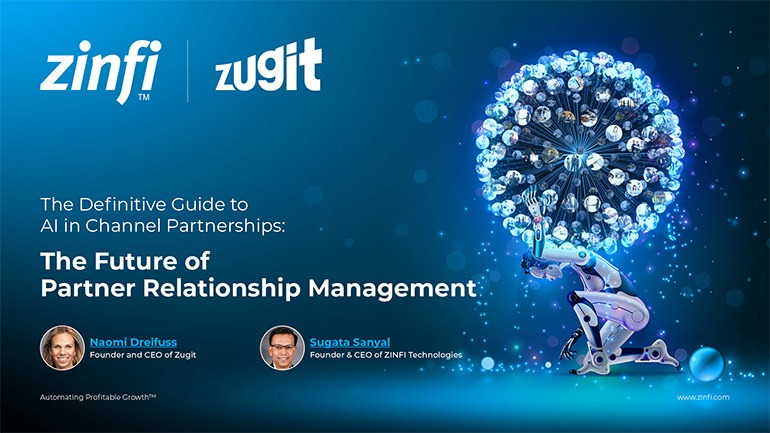 The Future of Partner Relationship Management with AI in Partnerships
The Future of Partner Relationship Management with AI in PartnershipsDownload for FREE
 Cybersecurity for the 99%: Strategies from the Frontline
Cybersecurity for the 99%: Strategies from the FrontlineDownload for FREE
 Mastering Partner Relationships: A Strategic Approach to Business Growth
Mastering Partner Relationships: A Strategic Approach to Business GrowthDownload for FREE
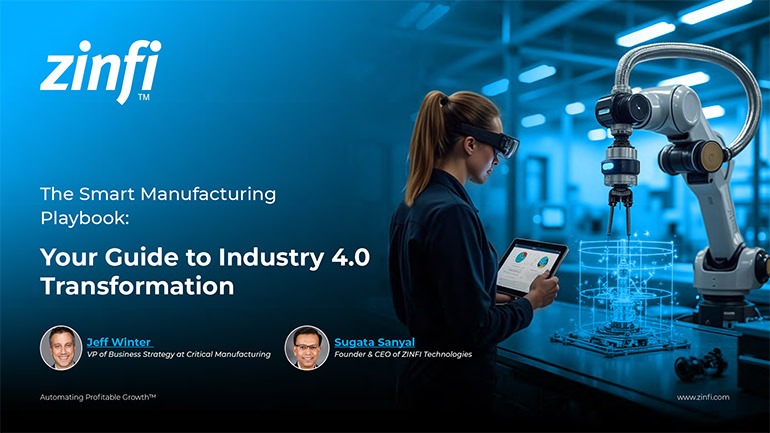 The Smart Manufacturing Playbook: Industry 4.0 Transformation
The Smart Manufacturing Playbook: Industry 4.0 TransformationDownload for FREE
 Mastering Partner Relationship Management: Keys to SaaS Channel Success
Mastering Partner Relationship Management: Keys to SaaS Channel SuccessDownload for FREE
 Navigating the AI Revolution: Guide for Partners in the Microsoft Ecosystem
Navigating the AI Revolution: Guide for Partners in the Microsoft EcosystemDownload for FREE
 Mastering the Modern Buyers Journey: Sales Leader’s Guide to AI & Engagement
Mastering the Modern Buyers Journey: Sales Leader’s Guide to AI & EngagementDownload for FREE
 Hybrid Cloud and Edge AI Computing Impacting the Future of PRM
Hybrid Cloud and Edge AI Computing Impacting the Future of PRMDownload for FREE
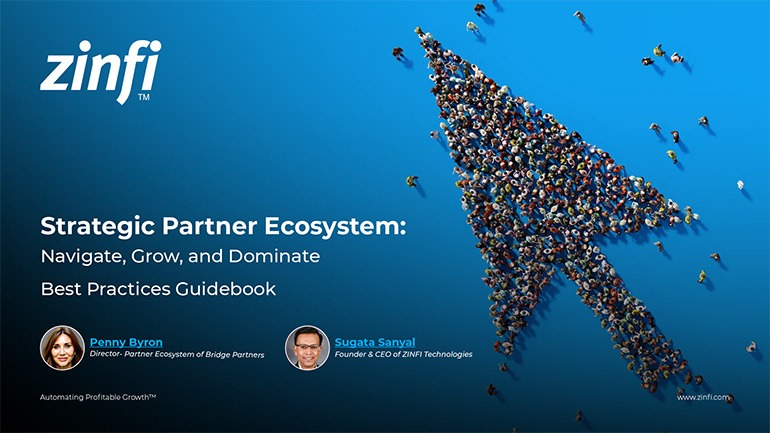 Strategic Partner Ecosystem: Navigate, Grow, and Dominate
Strategic Partner Ecosystem: Navigate, Grow, and DominateDownload for FREE
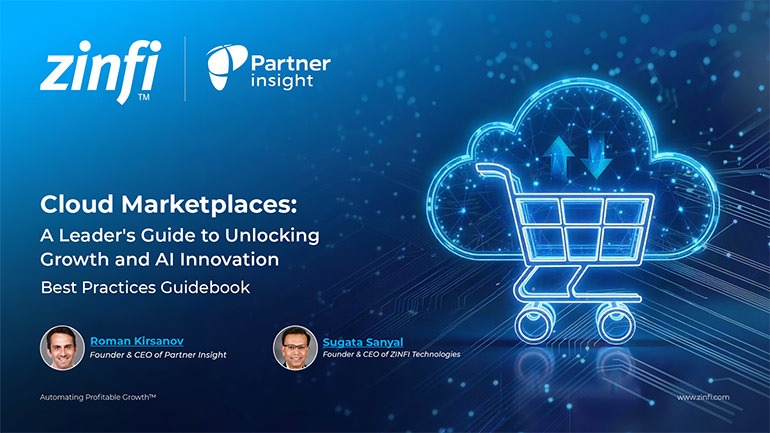 Cloud Marketplaces: Leader’s Guide to Unlocking Growth and AI Innovation
Cloud Marketplaces: Leader’s Guide to Unlocking Growth and AI InnovationDownload for FREE
 Getting More From Partner Performance: Guide to Measuring What Matters
Getting More From Partner Performance: Guide to Measuring What MattersDownload for FREE
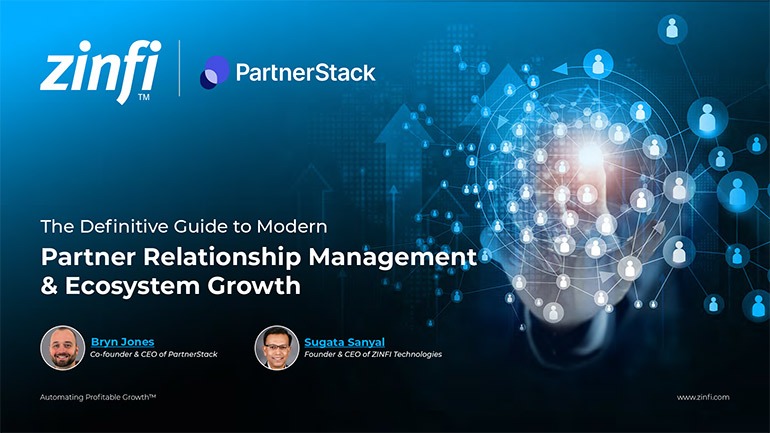 Guide to Modern Partner Relationship Management & Ecosystem Growth
Guide to Modern Partner Relationship Management & Ecosystem GrowthDownload for FREE
 Debunking the Entrepreneurship Myth Best Practices
Debunking the Entrepreneurship Myth Best PracticesDownload for FREE
 AI-Powered PartnerOps: The Next RevOps Frontier Best Practices
AI-Powered PartnerOps: The Next RevOps Frontier Best PracticesDownload for FREE
 Humanizing Brands: Guide to Strategic Partnering Best Practices
Humanizing Brands: Guide to Strategic Partnering Best PracticesDownload for FREE







